Did you know participation in LA ICE protests has soared by over 300% in the past year alone? This staggering rise marks these demonstrations as some of the most significant civic actions in downtown Los Angeles since the 1990s. As the national conversation on immigration raids , law enforcement, and the presence of national guard troops intensifies, understanding the urgent dynamics unfolding in Los Angeles has never been more important. In this article, we break down the real-time impacts, critical facts, and big questions shaping the LA ICE protests that are redefining the city’s relationship to immigration policy and civic action.
LA ICE Protests: Understanding the Scope and Impact in Los Angeles
The LA ICE protests are a direct response to the increasing frequency and intensity of immigration raids and enforcement actions in downtown Los Angeles . Bringing together families, activists, and community leaders, these protests have transformed areas like Los Angeles City Hall and the Federal Building into epicenters of civic expression. The impact is deeply felt—not only are thousands attending these events, but the ripple effects are seen in how local government, such as the office of mayor Karen Bass , and agencies such as the Los Angeles Police Department respond.
These demonstrations are significant not just for their size but also for their ability to transform public opinion and policy debate. Stringent law enforcement actions, declarations of unlawful assembly , and the visible presence of guard troops and national guard troops have drawn intense scrutiny. As a result, the LA ICE protests are now seen as a lightning rod for discussions on civil liberties, community safety, and government accountability in Los Angeles. Understanding the scope of these protests involves examining both their evolving goals and the reactions they trigger in the city’s political and social landscape.
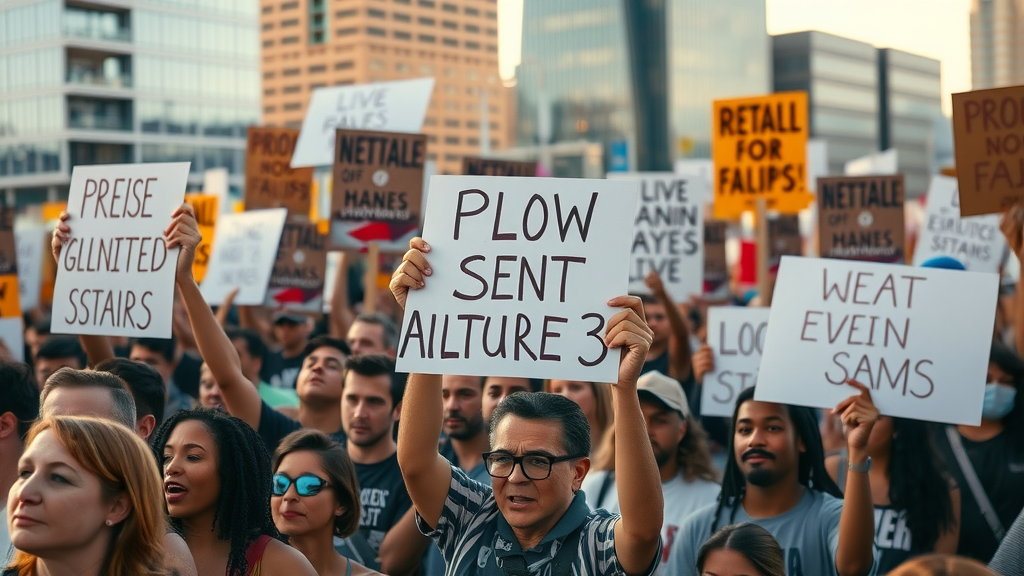
Startling Facts: The Scale of Recent LA ICE Protests and Their Growing Influence
The past year has been transformative: LA ICE protests have drawn unprecedented attention, with attendance increasing by over 300%. Downtown Los Angeles, once the site of sporadic demonstrations, now regularly witnesses marches, sit-ins, and peaceful vigils—sometimes swelling to thousands of participants spanning generations and backgrounds.
This dramatic growth reflects not only frustration over ongoing immigration raids but an energized community demanding legislative and policy change. Recent protests have moved beyond mere reaction, catalyzing broader discussions on topics like the deployment of national guard troops , the use of tear gas by law enforcement, and even the oversight responsibilities held by leaders like mayor Karen Bass and Governor Gavin Newsom . The frequency of demonstrations directly reflects the community’s resolve to be heard.
"In the past year, participation in LA ICE protests has increased by over 300%, making them some of the most significant civic actions in downtown Los Angeles since the 1990s."
What You'll Learn: Essential Insights into LA ICE Protests, Law Enforcement, and Public Response
- Background and motivations behind LA ICE protests
- How national guard and law enforcement respond
- Impact of immigration raids in los angeles
- Key dates, locations, and legal considerations
- Public opinion and media narratives
- Implications for downtown los angeles communities
The Origins of LA ICE Protests: A Los Angeles Perspective
The roots of the LA ICE protests are entwined in a history shaped by shifting federal and local immigration policies. In recent years, neighborhoods across downtown Los Angeles have experienced a surge in immigration raids , sparking anxiety and resilience within the community. These interventions, often dramatic and highly visible, magnified tensions between residents and government agencies such as ICE, the California National Guard , and even the California Highway Patrol .
Longtime Angelenos recall that waves of protests have periodically shaped policy in Los Angeles, but nothing has matched the recent scope. As federal authorities executed large-scale immigration enforcement actions, residents witnessed an escalation in both the number and size of public demonstrations. This reaction is partly a product of high-profile incidents, national scrutiny, and impactful local organization, creating a powerful story of resistance from the city’s immigrant and minority communities.

Immigration Raids and Policy Shifts: Tracing the Trigger in Downtown Los Angeles
Policies enacted at the federal level, especially under the Trump administration , resulted in intensified immigration raids that directly affected downtown Los Angeles. These enforcement actions often occurred without warning, leading to community fear and heightened distrust between residents and various branches of law enforcement . The response was immediate: geography and emotion converged as affected communities—especially near the Federal Building and detention centers —mobilized to resist through organized protest.
This mobilization revealed a complex web of local and national policy. The deployment of national guard troops and guard troops to support enforcement drew particular criticism, further fueling the protests. As communication between the public , press , and law enforcement officers often faltered, mistrust deepened, setting the stage for ongoing confrontations that continue to draw national attention.
"The connection between national guard deployment and immigration enforcement cast a long shadow over community trust in downtown Los Angeles."
National Guard and Law Enforcement: Roles in LA ICE Protests
The complex interplay of national guard troops , local officers, and protestors has become a defining feature of LA’s landscape. With each declared unlawful assembly , the approach of law enforcement is examined more closely. These agencies must balance public safety priorities against the civil liberties of demonstrators decrying immigration raids .
Critics question whether the massive deployment of guard troops is warranted, often citing the intimidation such a force projects against peaceful protestors. Proponents, including some city officials, defend these measures as necessary to prevent escalation and protect property. The divergent perspectives highlight the challenges facing Los Angeles in crafting a just response to the evolving demands of its citizens.
National Guard Troops: Deployment, Duties, and Public Perception
When the national guard is deployed to support local law enforcement, their duties typically include crowd monitoring, helping maintain barriers, and logistical support. Visibly armed and organized, national guard troops can both reassure some segments of the public and disquiet others. Their involvement in LA ICE protests has raised enduring questions about the militarization of public space and the psychological impact on protesters and bystanders alike.
Public perception is sharply divided. For some, the national guard’s presence is a sign that authorities are taking concerns seriously, reflecting the gravity of the protests. For others, the same presence is a stark threat, signaling that peaceful demonstrators are being met as potential criminals. This dichotomy intensifies an already fragile relationship between residents and those sworn to serve them in downtown Los Angeles .
Law Enforcement in Los Angeles: Strategies During Unlawful Assembly
Law enforcement officers in Los Angeles work alongside the California Highway Patrol and guard troops to coordinate response during declared unlawful assemblies . Strategies range from employing non-lethal crowd control methods—like tear gas —to establishing lines of communication with protest leaders. Key to their approach is ensuring both public safety and the upholding of First Amendment rights, yet controversies over the proportionality of responses persist.
- Use of crowd control tactics
- Communication between public, press, and guard troops
- Legal boundaries and public safety priorities
The involvement of los angeles police department and law enforcement officers in protests continues to spark debate. Their actions are closely watched by the media and civil liberties groups, especially in instances where detentions or force is perceived as excessive. As public scrutiny grows, agencies are pressured to refine protocols and enhance transparency, hoping to restore community trust amidst ongoing turbulence.
Immigration Raids: The Catalyst for Protests in Los Angeles
The triggering effect of recent immigration raids in downtown Los Angeles cannot be overstated. Families have been separated; neighborhoods have been upended—fueling a groundswell of outrage. Each raid has not only galvanized large-scale demonstrations, but also fostered alliances among advocacy groups, legal organizations, and city officials such as mayor Karen Bass .
The response to these enforcement actions exemplifies how policy decisions reverberate through local communities. Stories of residents detained and families disrupted are shared widely, intensifying calls for change. The LA ICE protests , therefore, represent a powerful stand against policies many find unjust, as well as a critical lever for future reforms in immigration law and the approach of law enforcement .
The Trump Administration’s Influence on Immigration Raids
The Trump administration marked a turning point in the scale and aggression of immigration raids . Federal efforts, often carried out with the support of local law enforcement officers and guard troops , resulted in heightened operations such as "Operation Safe City" and the controversial Family Separation Policy . Downtown Los Angeles became a hotbed of activity, both on the enforcement and protest fronts.
Many Angelenos see the policies set during this period as a direct cause for the intensification of the LA ICE protests . National dialogue around the consequences of aggressive immigration enforcement has only put further pressure on local officials. High-profile events ignited conversations about the appropriate scope of police and military involvement in civic life, influencing how both protesters and authorities now approach their roles.
| Event/Policy | Date | Location | Involved Groups | Public Outcome |
|---|---|---|---|---|
| Operation Safe City | 2017 | Downtown Los Angeles | ICE, LAPD, National Guard Troops | Mass Protests, Public Outcry |
| Family Separation Policy | 2018 | Los Angeles, CA | ICE, Immigration Advocates | Rallies, Policy Petitions |
| Unlawful Assembly Declarations | 2020 | Downtown LA | Law Enforcement, Protesters | Arrests, National Dialogue |

Downtown Los Angeles: Epicenter of Unlawful Assembly and Protest Organization
Downtown Los Angeles has become synonymous with the LA ICE protests , serving as both a symbolic and physical battleground for immigration justice. Home to critical infrastructure like the Los Angeles City Hall , federal buildings , and community spaces, it is where activists, faith leaders, and ordinary Angelenos unite. The area’s centrality and historical significance amplify the movement’s visibility, lending gravity to each demonstration.
Organizers leverage the city’s diverse, densely populated neighborhoods to coordinate large-scale actions. The close proximity of government offices, transportation hubs, and residential communities ensures that the impact of each protest is widely felt. Sidewalks lined with banners, the presence of guard troops , and regular announcements of unlawful assembly underscore the magnitude of ongoing unrest and the evolving tactics of activists and authorities alike.
How Protests in Los Angeles Shape Local and National Conversations
Protests in Los Angeles don’t just echo through city streets—they set the pace for national debates on immigration and civil liberties. The organizing prowess of LA’s advocacy networks and the diversity of voices drawn to the cause have inspired similar demonstrations in other cities. These gatherings prompt high-level discussions at city hall, push lawmakers to reconsider priorities, and serve as critical pressure points for change in both state and federal policy.
The media footprint of these events—replete with images of downtown los angeles landmarks, law enforcement standoffs, and crowds calling for justice—moves the needle on national narratives, influencing public opinion across the country. The resulting scrutiny holds officials accountable and keeps the issues at the forefront of civic discourse well beyond Southern California.
Key Locations: Where LA ICE Protests Have Made Their Mark
Several iconic sites have repeatedly become flashpoints for LA ICE protests . From the commanding steps of Los Angeles City Hall to the imposing federal building on Alameda Street, these locations anchor the movement in both history and daily city life. Areas like Pershing Square and the wider downtown civic center serve as key rallying points where demonstrators assemble, drawing media and public attention.
These spaces are not chosen at random—they provide tactical advantages for visibility, safety, and access to officials. Their ongoing use illustrates the central role of urban geography in both organizing and suppressing protest movements, bearing out the strategic calculation of organizers and the recalibrated response of city agencies and law enforcement officers .
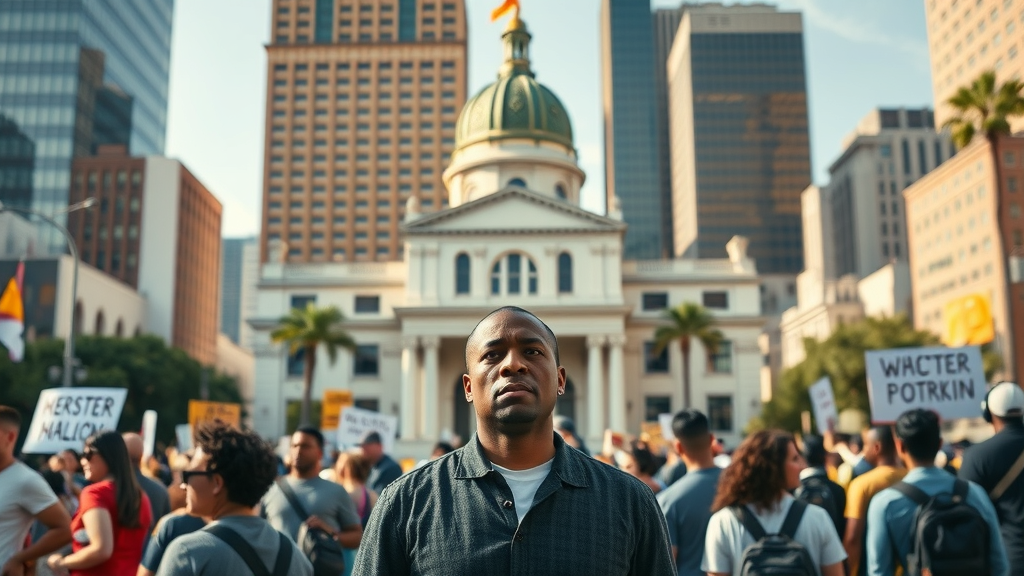
- Los Angeles City Hall
- Federal Building on Alameda Street
- Pershing Square
- Downtown Civic Center
Guard Troops and National Guard Troops: Impact on Protest Dynamics
The role of guard troops and national guard troops in LA ICE protests is one of the most debated aspects of the city’s response to dissent. Their coordinated deployment, especially during periods of mass mobilization, fundamentally changes the protest landscape. On one hand, authorities cite their presence as key for crowd control and public safety. On the other, many residents and activists perceive the sight of troops in full uniform as a dangerous step toward the normalization of military force in civilian interactions.
The frequent presence of national guard troops changes the behavior of both protesters and law enforcement. Protest leaders often shift strategy to ensure peaceful protests do not escalate, while some citizens feel intimidated from participating. The influence of the guard is layered, affecting not just how protests function but also how they are perceived in the wider community and reported in the media.
Coordination Between Local Law Enforcement and the National Guard
Effective response to large-scale assemblies depends on the collaboration between local law enforcement, like the los angeles police department , and the national guard . LA’s evolving model overlays military discipline and resources onto the city’s civilian policing infrastructure, creating new challenges and points of friction. Regular planning meetings, shared communications systems, and joint field operations form the backbone of this partnership.
Yet, this fusion of military and police roles raises fundamental questions about oversight and proportionality. The involvement of so many actors—including California highway patrol , duty marines , and enforcement officers from multiple jurisdictions—complicates accountability and amplifies community concerns about transparency, especially when force is used to disperse crowds or enact mass arrests.
Public Reactions to Military Presence: Safety Versus Intimidation
Community reactions to the presence of military forces in protest settings are mixed and often deeply emotional. While some citizens appreciate the added sense of security, others see the appearance of national guard troops as a provocation—an “us vs. them” symbol that undermines peace and trust. The diversity of Los Angeles amplifies these competing narratives, reflecting how complex dynamics of race, history, and policy intersect at each demonstration.
Perceptions are driven by firsthand experience, media portrayal, and ongoing dialogue with city officials like mayor Karen Bass and Governor Gavin Newsom . Ultimately, the choice to deploy the guard is as much about managing optics as it is practical safety, setting a precedent that will likely influence protest responses far beyond LA’s borders.
"The sight of national guard troops in downtown Los Angeles is a stark reminder of the high stakes at play in immigration debates."
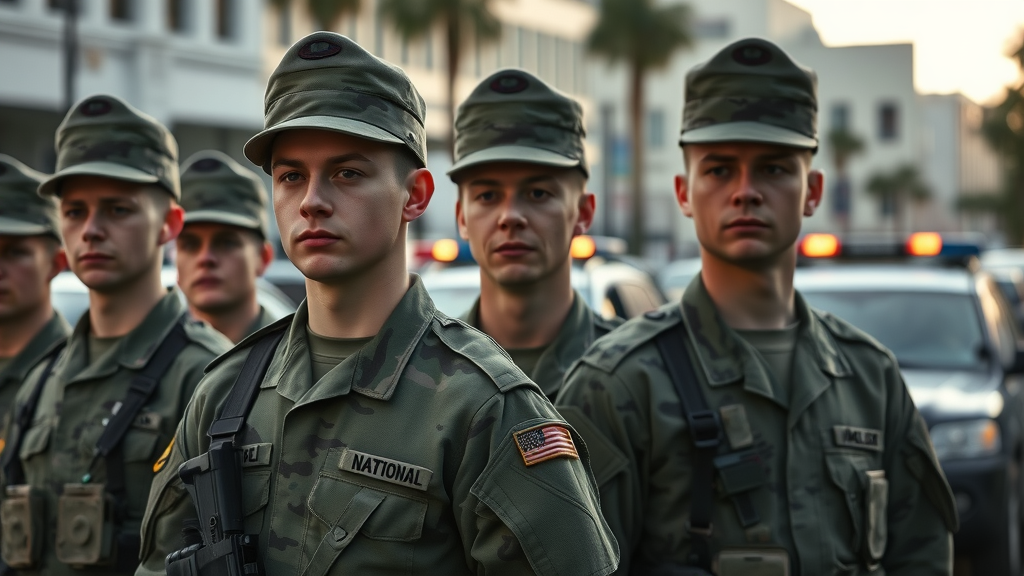
Unlawful Assembly and Civil Liberties During LA ICE Protests
The declaration of "unlawful assembly" at LA ICE protests has become a critical inflection point in the city’s approach to civil liberties. In Los Angeles, such a declaration grants law enforcement officers broader authority to disperse crowds and make arrests, but it also places strain on constitutionally protected rights to free speech and assembly. The ambiguity of this designation often leaves protestors and residents confused about acceptable conduct, making legal education an ongoing necessity.
Debates around unlawful assembly extend to city council chambers, advocacy groups, and the offices of legal aid organizations. Civil libertarians argue that the threshold is applied too loosely, chilling free expression and targeting marginalized communities most likely to be impacted by aggressive immigration raids and police action. Law enforcement officials assert that such measures are only taken when violence or property damage threatens public safety, pointing to the logistical challenges of ensuring peace in large, highly charged gatherings.
Legal Definitions of Unlawful Assembly in Los Angeles Context
In most cases, an unlawful assembly in Los Angeles is defined as a group gathering with the intent or result of disrupting the peace or engaging in illegal activity. The Los Angeles Police Department is vested with the discretion to declare such assemblies, especially if protestors block access to public buildings, ignore dispersal orders, or threaten critical infrastructure like the federal building or major transit routes. This legal threshold, while clear on paper, can be open to interpretation in the heated moment.
A declaration triggers a sequence of escalating warnings from enforcement officers, followed by the use of crowd dispersal tactics such as tear gas , non-lethal munitions, and coordinated arrests. Understanding these rules helps activists and bystanders alike navigate the risks and responsibilities embedded in public demonstration, reinforcing the vital role of legal literacy for everyone involved.
Know Your Rights: Navigating the Complexity During ICE Protests
Whether you are organizing, participating, or simply witnessing an LA ICE protest , it is essential to understand your rights under local and state law. Concerns often focus on maintaining the right to protest peacefully , knowing how to interact with law enforcement officers , and understanding what happens during detention or possible release should you be arrested. The ongoing legal debate means best practices can change, making it vital to keep up with the latest advisories from organizations specializing in civil rights, like the ACLU of Southern California.
- Right to protest peacefully
- Interacting with law enforcement
- Understanding detention and release procedures
Preparation is key: carry valid identification, have emergency contacts ready, and stay updated on designated safe spaces. Many advocates recommend documenting interactions and reporting violations, both to ensure accountability and to guide future legal challenges when necessary. Ultimately, knowing your legal standing is one of the best safeguards available in a rapidly shifting protest environment.
The Voices of Protest: Perspectives from Los Angeles Community Leaders
At the heart of the LA ICE protests are the impassioned community leaders, faith organizers, and activists who have consistently risked their own safety for the rights of their neighbors. Their perspectives frame the narrative, calling attention not only to policy missteps but also to the underlying values of justice and dignity that Los Angeles purports to uphold. They rally crowds, negotiate with city officials, and provide legal and emotional support to those affected by immigration raids .
These leaders amplify marginalized voices, ensuring that the impacts of national guard and police deployments are understood within the broader context of civil rights. From organizing legal clinics to standing at the front lines of rallies, their testimony shapes not only how the city responds, but how it evolves on issues of inclusion and equity. The symbols, speeches, and alliances forged under their guidance continue to inspire current and future activists alike.
"As a community, we cannot stay silent while immigration raids threaten our neighbors and our values." — Downtown LA Activist
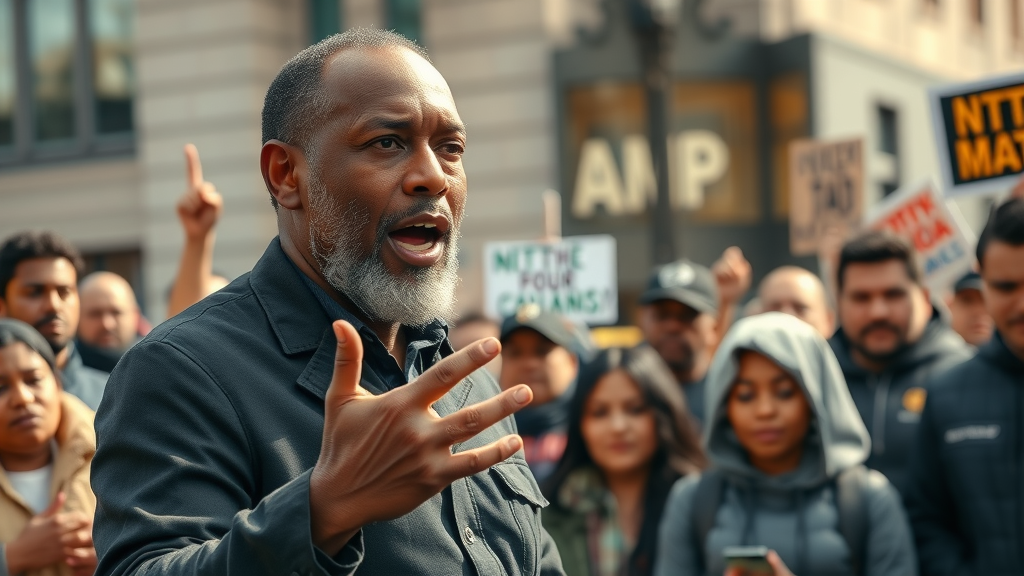
Media Coverage and Public Opinion on LA ICE Protests
The spotlight on LA ICE protests is brightest in the media, where stories and images from downtown Los angeles consistently shape public opinion and policy conversations. Traditional news outlets frame the conflict in a variety of ways—sometimes highlighting the righteous anger of activists, other times emphasizing the authority and preparedness of law enforcement. Editorial choices, headline emphases, and the prominence given to official statements or protestor testimonies all color the public narrative.
Coverage is not only local or national. International audiences track the city’s unrest, holding up Los Angeles as a symbol of the broader American debate over immigration raids , guarded by national guard troops and challenged by waves of migrant families seeking refuge and dignity.
How News Outlets Frame Protests in Downtown Los Angeles
The media’s role in shaping the tone of coverage around LA ICE protests cannot be underestimated. National broadcasters and local papers like the Los Angeles Times set the agenda, spotlighting key events such as large-scale detentions, public speeches by city officials, and the latest policy announcements. At times, coverage has sparked empathy for protestors, especially when images of family separations or the use of tear gas surface. At others, stories focus on the logistics and costs associated with maintaining public order—a narrative that can sway public sentiment toward supporting increased presence of national guard troops .
The power of framing here is immense, as the same facts often tell very different stories. Storylines that humanize affected families lead to public outcry and political action, while those emphasizing city disruptions may push for stronger legal restrictions on demonstrations and support for robust law enforcement budgets.
Trends in Social Media Support for Immigrant Rights
Social media channels are equally influential, rapidly communicating real-time protest updates, legal advisories, and calls to action across broad networks. Hashtags like #NoICEinLA and #KeepFamiliesTogether trend during major protest days, helping organizers coordinate logistics and supporters share stories that build solidarity across neighborhoods and demographics.
Platforms like Twitter, Instagram, and Facebook amplify grassroots voices that often go unheard in traditional news forums. They offer a critical outlet for community leaders, advocacy groups, and even public officials like mayor Karen Bass and Gavin Newsom to shape and respond to ongoing developments. This digital pipeline ensures that the evolving narrative of the LA ICE protests remains current, relevant, and driven by those most affected.
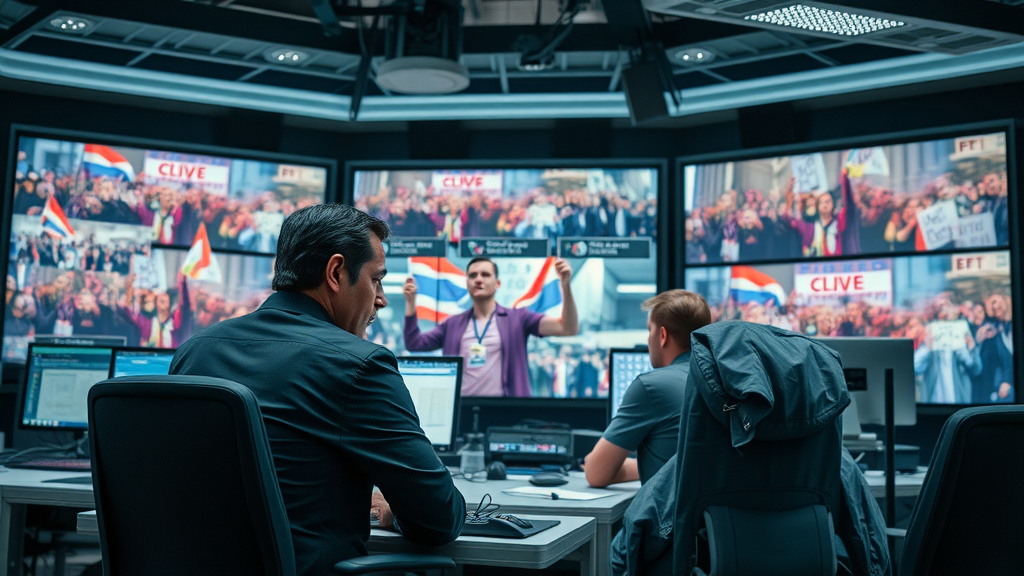
Frequently Asked Questions About LA ICE Protests, National Guard, and Law Enforcement
- Why have LA ICE protests intensified recently?
- Increased enforcement actions and legislative changes have motivated more community members in Los Angeles to protest. Fear over aggressive immigration raids and the visible presence of the national guard troops have brought urgency to public demonstrations.
- What is the role of national guard troops during LA ICE protests?
- National guard troops are deployed to support local law enforcement in maintaining order, but their presence is often a point of contention regarding civil liberties and police militarization.
- Are protests in Los Angeles lawful?
- Peaceful protesting is protected, but events can be declared 'unlawful assembly' by law enforcement. Understanding your rights is crucial when participating.
People Also Ask: Key Questions on LA ICE Protests
What are the main goals of LA ICE protests?
Protesters seek to draw attention to the impact of immigration raids on families and communities, call for an end to aggressive enforcement practices, and advocate for comprehensive immigration reform.
How does the deployment of the national guard affect community trust in Los Angeles?
Many residents perceive the deployment of national guard troops as an escalation that diminishes trust and increases fear among immigrant and minority communities.
What should I know if I'm attending a protest in downtown Los Angeles?
Stay informed about your legal rights, bring identification, keep emergency contacts handy, and monitor local news for updates about unlawful assembly declarations or police activity.
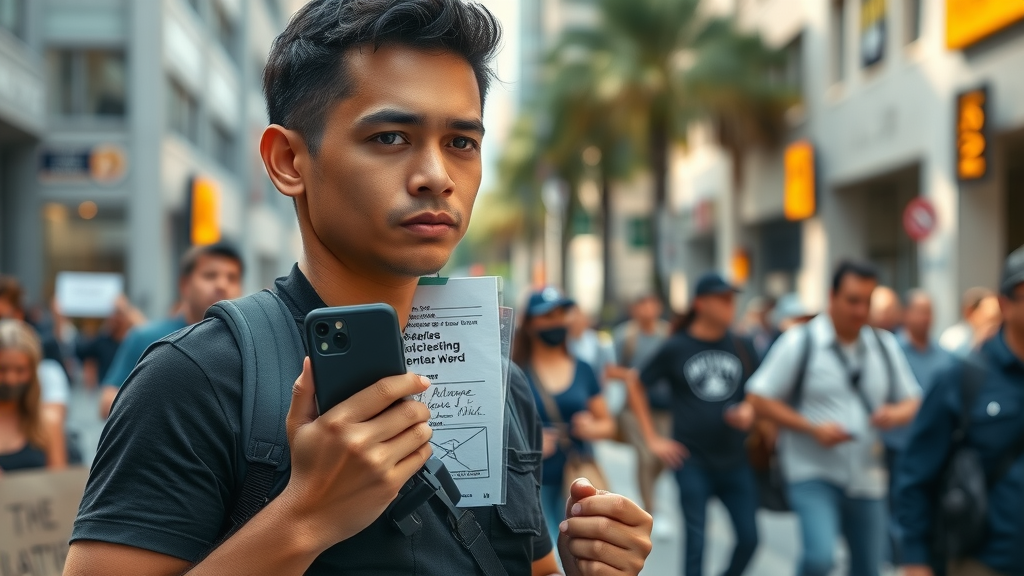
Comparing LA ICE Protests to Other Immigration Raids Nationwide
| City | Major Protest Date | National Guard Deployed | Unique Features |
|---|---|---|---|
| Los Angeles | June 2023 | Yes | Largest turnout, focused on policy change |
| Chicago | March 2023 | No | Emphasis on community legal aid |
| New York City | April 2023 | Limited | Diverse coalition, creative protests |
Expert Opinions: Legal Scholars and Policy Analysts Weigh In on Protests in Los Angeles
Legal experts and policy analysts agree: the intersection of immigration law, public protest, and the expanded role of the national guard in Los Angeles presents complex challenges for democracy and civil liberties. UCLA legal scholars, for example, note the “chilling effect” imposed by the presence of armed troops at protests—raising serious questions about the limits of free expression and the appropriate role of government in managing dissent.
Policy analysts, referencing recent standoffs in downtown los angeles , advocate for clearer standards around the criteria and communication surrounding unlawful assembly declarations. They urge both city officials and advocacy groups to prioritize transparency, dialogue, and sustained engagement over punitive crackdowns. Such expert perspectives are essential as Los Angeles debates how best to uphold both security and freedom.
"While the right to protest is fundamental, the presence of heavily armed guard troops creates a chilling effect on free expression." — UCLA Law Professor

The Future of LA ICE Protests in Los Angeles: Predictions and Ongoing Developments
The future of LA ICE protests is closely linked to actions by city government, law enforcement, and grassroots activism. As campaigns for comprehensive immigration reform gain strength, and as both the threat and use of national guard troops continue to stir public debate, Los Angeles stands at a crossroads. The coming years are likely to see further friction, yet also new avenues for compromise and progress.
Ongoing developments include potential shifts in local ordinances governing protest conduct, greater investment in de-escalation training for law enforcement officers , and enhanced communication channels between officials and protest leaders. This evolving landscape requires all stakeholders to remain adaptive, thoughtful, and committed to upholding the rights and safety of every Angeleno.
How Local Policy May Evolve in Response to Continued Demonstrations
Legislative bodies, advocacy organizations, and the broader public are engaged in a dynamic push and pull over the direction of policy in Los Angeles. Proposed changes may include new guidelines for declaring unlawful assembly , stricter criteria for deploying the national guard , and expanded training on civil liberties issues for police department staff. These potential reforms are informed by the lived experience of Angelenos and the critical lessons of the last several years of protest activity.
The city’s ability to adapt—balancing accountability for past excesses with proactive engagement of future crises—will determine the scope and shape of LA ICE protests for years to come, making ongoing community input essential for effective governance and equitable outcomes.
Recommendations for Stakeholders: Law Enforcement, National Guard, and Community Leaders
- Improve communication and transparency between law enforcement and protest organizers
- Invest in community-led de-escalation training
- Review policies that prompt national guard deployment
- Promote dialogue among city agencies and immigrant communities

Key Takeaways from LA ICE Protests and Law Enforcement Actions in Los Angeles
- LA ICE protests have shifted the conversation on immigration policy in downtown Los Angeles
- National guard and law enforcement coordination remains controversial
- Ongoing legal debates over unlawful assembly and civil liberties
- Community organizing is essential for sustained change
Further Reading and Resources on LA ICE Protests, National Guard, and Immigration Policy
- Links to local advocacy organizations
- Official statements from law enforcement
- Recent legal rulings affecting protest rights
- Documentaries and first-person accounts of LA ICE protests
Share Your Perspective on LA ICE Protests: Engage, Discuss, and Participate in Los Angeles
"Change requires participation: Share your voice in the ongoing dialogue surrounding LA ICE protests."
Take Action: Join the ongoing conversation, educate yourself about your rights, and support organizations committed to immigrant justice in Los Angeles. The evolution of LA ICE protests depends on engaged citizens willing to make a difference in their communities.
 Add Row
Add Row  Add
Add 

 Add Row
Add Row  Add Element
Add Element 
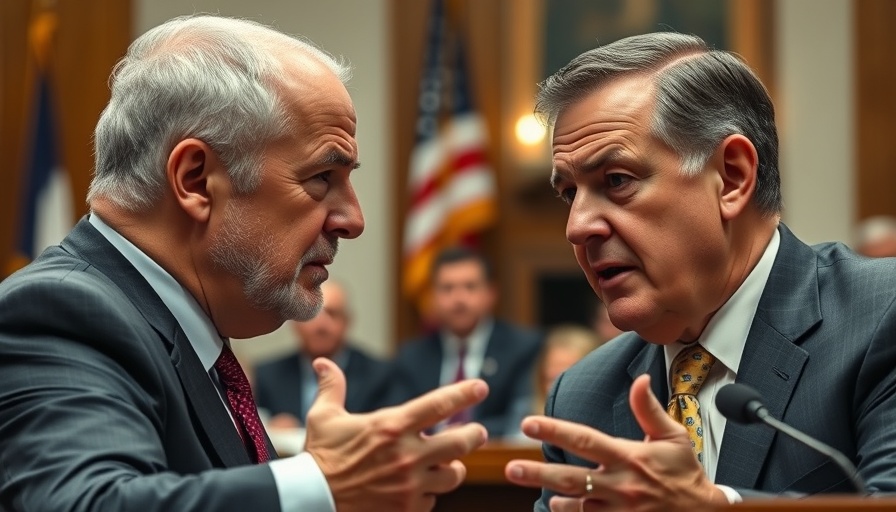



Write A Comment